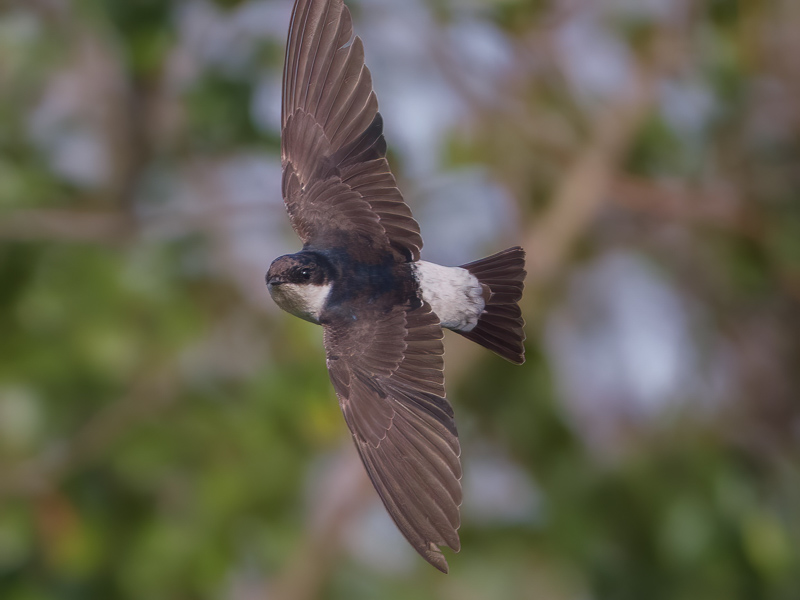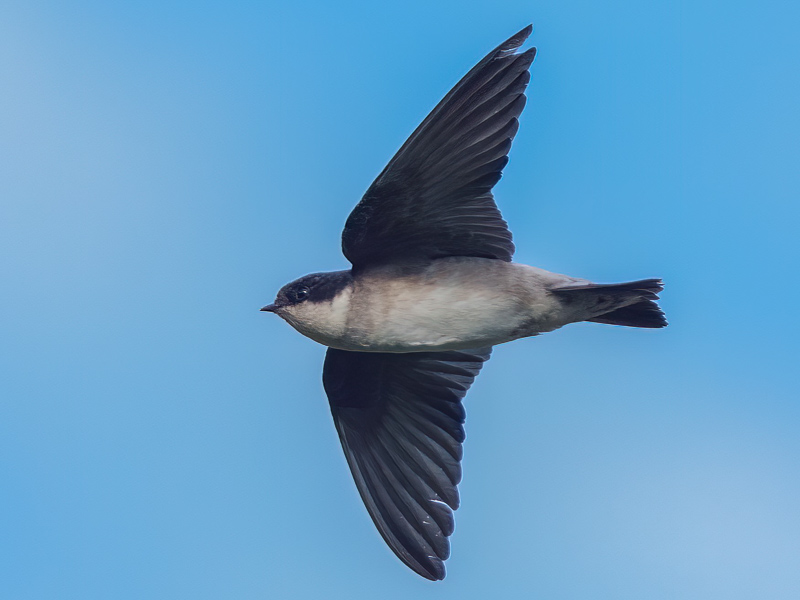Siberian House Martin Delichon lagopodum 遠東毛腳燕
Category I. Rare late autumn passage migrant to open-country, usually wetland, areas.
IDENTIFICATION

Oct. 2022, Robert Hackel. First-year.
13-14 cm. Structurally similar to Asian House Martin D. d. dasypus but slightly larger. Dark above, white below with large white rump and dark tail.
First calendar-year birds (illustrated) are browner and duller above, and the uppertail coverts usually have conspicuous dark centres with broad white fringes (which, if present, are diagnostic), though they may have only narrow white fringes or even be pure white. This bird has begun moult to an adult-like plumage and blue-tinged feathers have appeared.

Oct. 2022, Robert Hackel. First-year.
Underparts of first-years are sullied brownish on the chest, flanks and vent. All birds have a white chin.
In adult plumage, pure white uppertail coverts result in a large clean white rump patch. The typical contact call is lower-pitched than that of Asian House Martin (Leader et al. 2021).
VOCALISATIONS
The typical flight call is deeper and flatter than either Siberian or Asian House Martin, resembling more Sand Martin.
RANGE & SYSTEMATICS
Monotypic. Breeds in Russia east of River Yenisei, in the Altai Mountains and northern Mongolia east to Anadyrland, Sea of Okhotsk and northeast China; probably winters in southeast Asia (Leader et al. 2021). In China a summer visitor to Xinjiang, Nei Mongol and the far northeast (Liu and Chen 2020).
DISTRIBUTION & HABITAT PREFERENCE
Most records have occurred in the Deep Bay area over fish ponds or Mai Po NR; there are two records from the marsh area at Pui O, Lantau.
OCCURRENCE
Siberian House Martin was first recorded in Hong Kong on 20 November 2009 (Leader 2012). Since then it has proved to be a near annual late autumn and early winter migrant, with extreme dates of 21 October and 30 December. Generally, up to three birds are recorded, but the highest is a count of 17 on 30 December 2015 over fish ponds along the approach road to Mai Po NR. It is likely the species was overlooked previously.
BEHAVIOUR, FORAGING & DIET
Forages aerially on insects, but no details.
CONSERVATION STATUS
IUCN: Least Concern. Population trend decreasing.
Leader, P. J. (2012). Common House Martin Delichon urbicum at Lok Ma Chau Wetland Mitigation Area. The first Hong Kong record. Hong Kong Bird Report 2009-10: 263-266.
Leader, P., G. Carey and M. Schweizer (2021). The identification, taxonomy and distribution of Western, Siberian and Asian House Martins. British Birds 114: 72-96.
Liu, Y. and Y. H. Chen (2020). The CNG Field Guide to the Birds of China (in Chinese). Hunan Science and Technology Publication House, Changsha.

